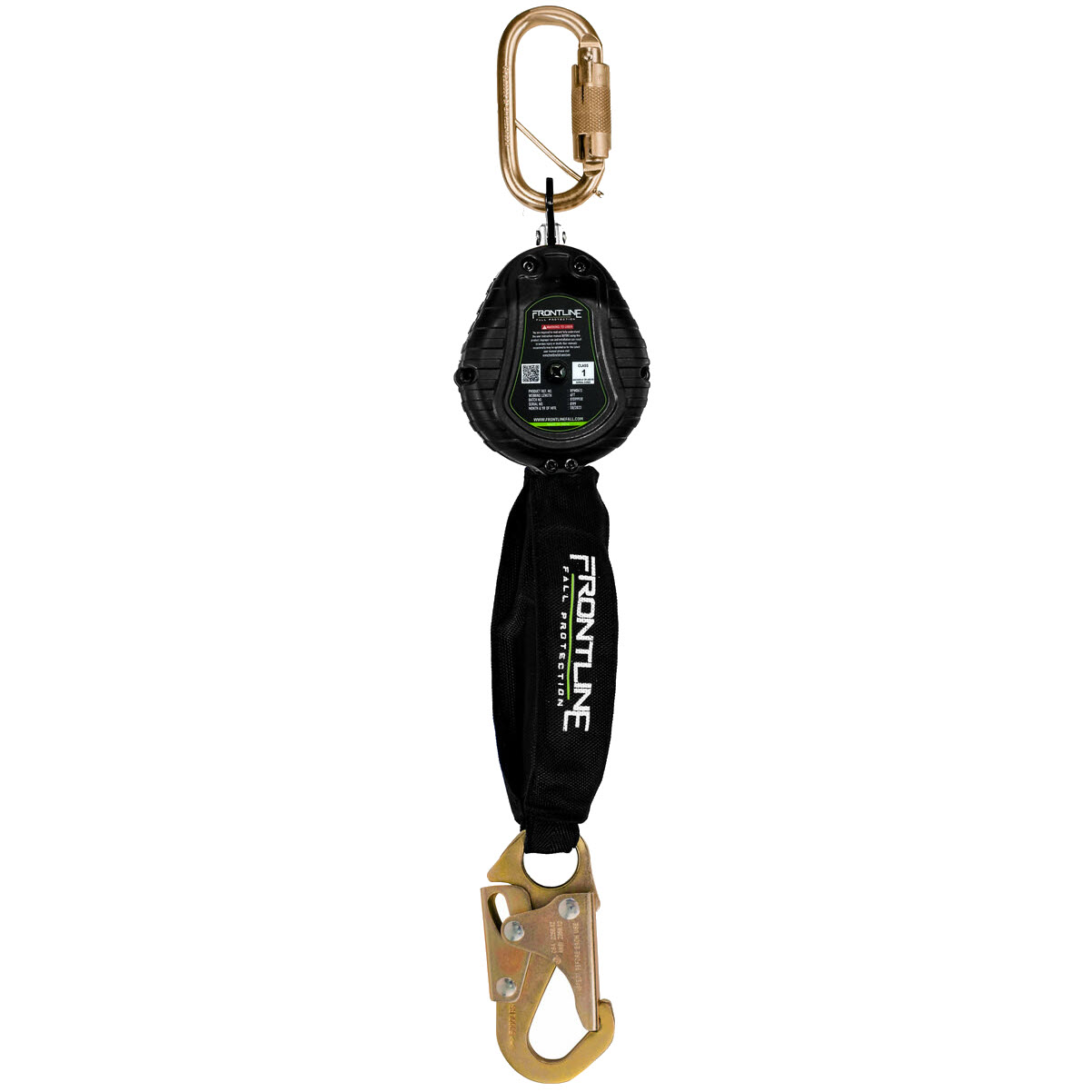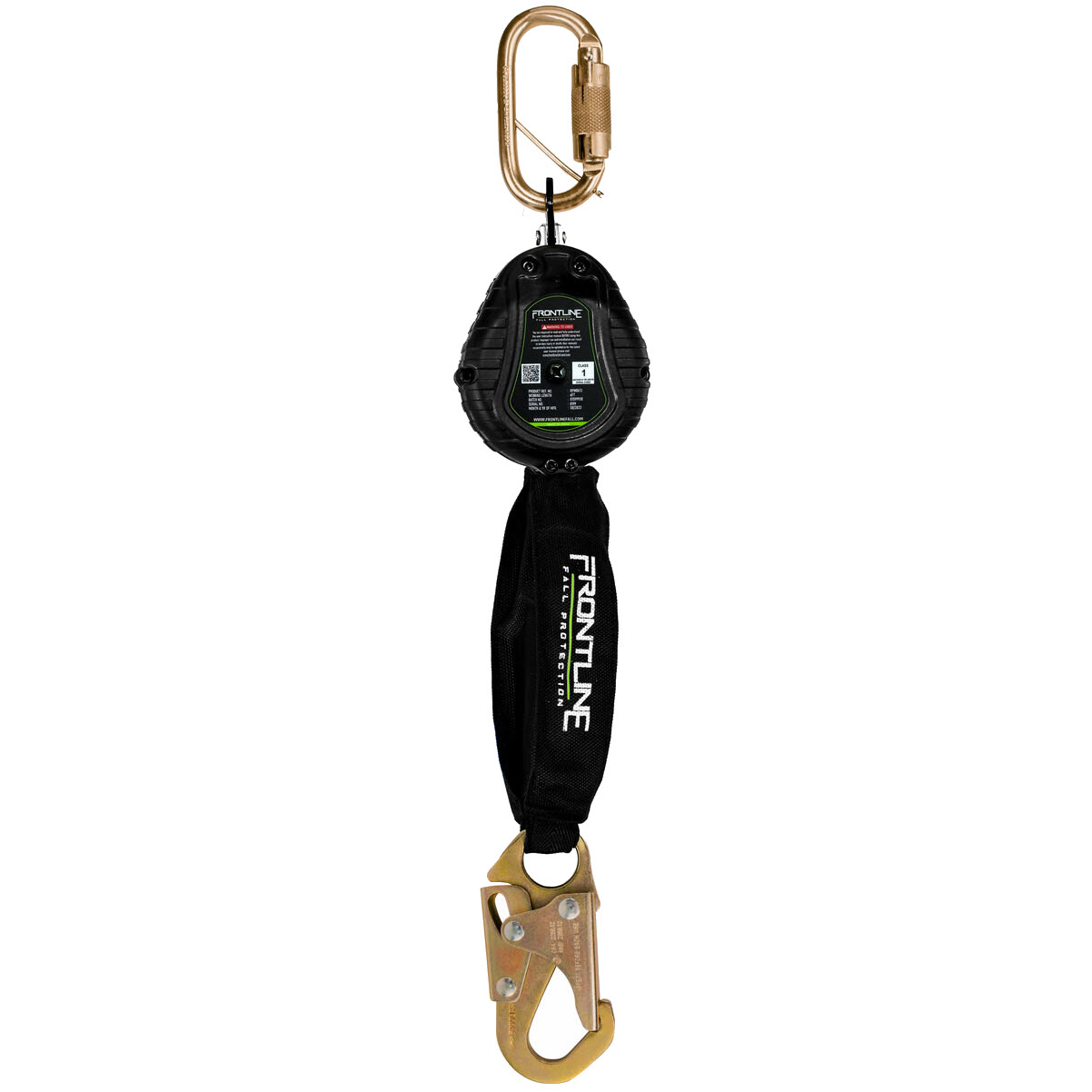Answer
Mar 13, 2025 - 08:14 AM
This Frontline model is rated for a maximum fall arrest distance to 42in, meeting the guidelines for Class B SRL
SRL Type and Rating
1. Lanyard Type and Length Requirements
2. Anchorage Point Requirements
SRL Type and Rating
- The SRL must be rated for personal fall arrest or fall restraint as required for boom lift use.
- Look for labels that indicate the SRL meets ANSI Z359.14 standards for Class A or Class B SRLs.
- Class A SRLs: Maximum arrest distance of 24 inches (best for minimizing fall distance).
- Class B SRLs: Maximum arrest distance of 54 inches (adequate if proper clearance exists).
- The SRL should specify suitability for overhead use or leading edge conditions if applicable.
OSHA Requirements for Boom Lift Lanyard Length and Placement
When working in a boom lift, OSHA has specific requirements for lanyard use to ensure worker safety. The key standards are outlined under OSHA 29 CFR 1926.453 and ANSI A92.2 for aerial lifts.
1. Lanyard Type and Length Requirements
Fall Restraint System (Preferred)
- Designed to prevent a worker from reaching a fall hazard.
- Typically requires a fixed-length lanyard that keeps the worker inside the lift platform.
- Recommended lanyard length: 2-4 feet (enough for mobility but short enough to prevent ejection).
Fall Arrest System (When Restraint Isn’t Possible)
- Required if there's a risk of a worker falling over the guardrail.
- Lanyard length should be carefully chosen to minimize potential fall distance.
- OSHA requires that the system limits the free fall distance to 6 feet and prevents contact with any lower level.
- Self-retracting lanyards (SRLs) are often recommended for better mobility and faster fall arrest activation.
2. Anchorage Point Requirements
Anchor Location:
- The lanyard or SRL must be attached to a manufacturer-approved designated anchor point within the boom lift’s platform.
- Attaching to guardrails is not compliant unless specifically designed and rated for anchorage.
Anchor Strength:
- OSHA requires anchor points to be capable of supporting 5,000 lbs per person or designed by a qualified person to ensure a safety factor of 2:1.



